EPR Registration Online
Extended Producer Responsibility (EPR) for e-Waste means responsibility of any producer of electrical or electronic equipment, for channelization of e-Waste to ensure environmentally sound management of such waste. Extended Producer Responsibility (EPR) may comprise of implementing take back system or setting up of collection centers or both and having agreed arrangements with authorised dismantler or recycler either individually or collectively through a Producer Responsibility Organisation recognised by producer or producers in their EPR Authorisation replace content
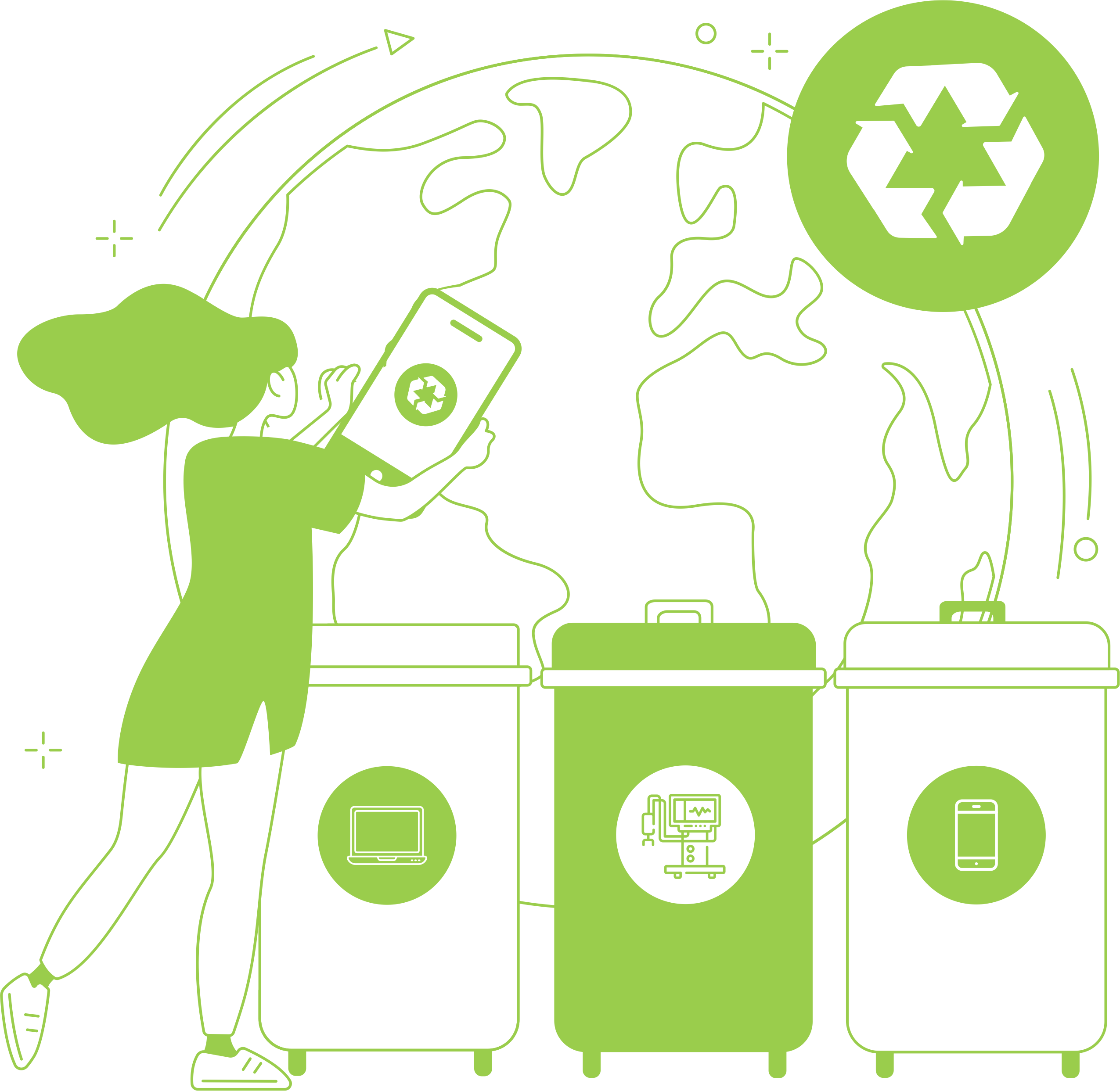
e-Waste EPR Rules
Ensuring that your business is in compliance with the upcoming e-Waste EPR Rules (2022) is not just a legal requirement, it’s also essential for the growth and prosperity of your enterprise. Ignoring these regulations could result in serious consequences, but with the right compliance management strategy in place, your business can thrive in a sustainable manner while contributing to a cleaner and healthier environment.
As a producer of EEE, it is your responsibility to ensure that e-waste is channeled through an Authorized Recycler via an effective EPR system.
All producers, manufacturers, bulk consumers, and importers are required to obtain EPR authorization, making it a mandatory process.
Non-compliance of these rules will attract heavy fines and criminal action on the brand producers. In Fact, there can be a ban on the production of products.
Our Services
EPR
Registration
Meeting your
recycling targets
Fulfilling your compliance equirements
Awareness Programme
EPR
Registration
Meeting your
recycling targets
Fulfilling your compliance equirements
Awareness Programme
EPR For e-Waste
Extended Producer Responsibility (EPR) is a crucial aspect of waste management that aims to ensure the responsible disposing of electronic devices that are no longer useful to consumers. It involves the implementation of a reverse collection mechanism and recycling of post-consumer waste to develop an efficient eWaste disposal solution for the disposal of end-of-life products.
According to the e-Waste Management Rule 2016 and Amendment Rule 2018, manufacturers, producers, importers, and bulk consumers of electrical and electronic equipment have yearly targets to fulfill their EPR obligations. In order to obtain EPR authorization from the Central Pollution Control Board, companies must present an EPR plan that outlines how they plan to collect and recycle complying with EPR and their end-of-life products to achieve their yearly targets.
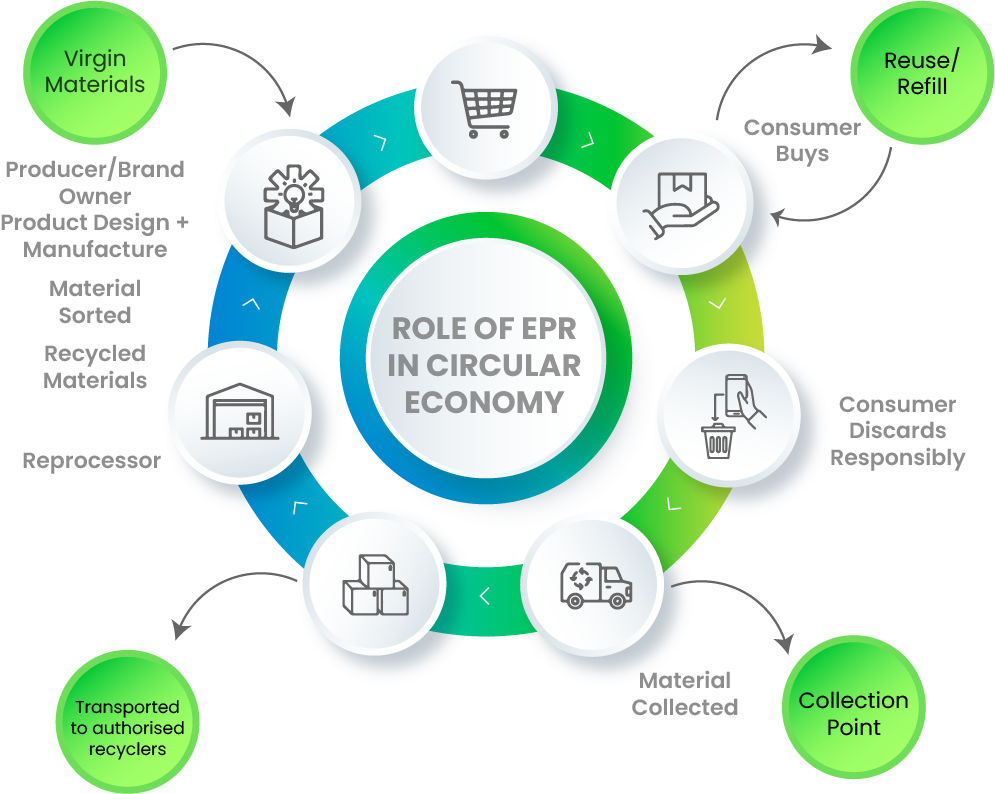
To streamline the implementation process of EPR, the Ministry of Environment, Forest and Climate Change, Government of India, has developed guidelines on Extended Producer Responsibility for Electronic and Electric Waste, which were included in the Third Amendment to the e-waste Management Rules in November 2022 to enhance e waste recycling solutions. As per these guidelines, manufacturers, producers, importers, and bulk consumers must register through an online centralized portal developed by the Central Pollution Control Board to improve accountability, traceability, and transparency of EPR obligations fulfillment.
Overall, EPR represents a crucial aspect of waste management, top e-waste recycling listed companies in india in the electrical and electronic equipment industry must take it seriously to ensure sustainable business practices and protect the environment.
Extended Producer Responsibility (EPR) is a crucial aspect of waste management that aims to ensure the responsible disposal of products that are no longer useful to consumers. It involves the implementation of a reverse collection mechanism and recycling of post-consumer waste to develop an efficient and effective system for the disposal of end-of-life products.
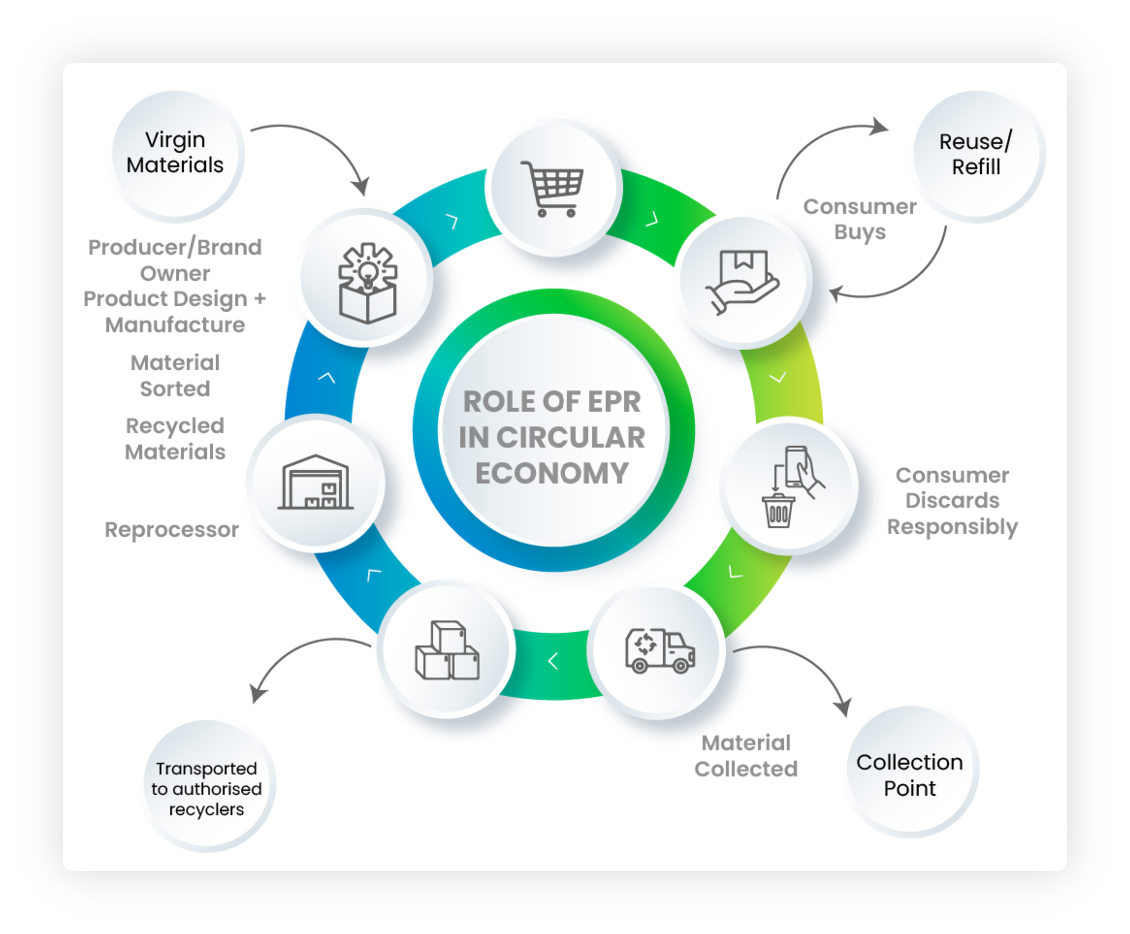
According to the E-waste Management Rule 2016 and Amendment Rule 2018, manufacturers, producers, importers, and bulk consumers of electrical and electronic equipment have yearly targets to fulfill their EPR obligations. In order to obtain EPR authorization from the Central Pollution Control Board, companies must present an EPR plan that outlines how they plan to collect and recycle their end-of-life products to achieve their yearly targets.
To streamline the implementation process of EPR, the Ministry of Environment, Forest and Climate Change, Government of India, has developed guidelines on Extended Producer Responsibility for Electronic and Electric Waste, which were included in the Third Amendment to the e-waste Management Rules in November 2022. As per these guidelines, manufacturers, producers, importers, and bulk consumers must register through an online centralized portal developed by the Central Pollution Control Board to improve accountability, traceability, and transparency of EPR obligations fulfillment.
Overall, EPR represents a crucial aspect of waste management, and companies in the electrical and electronic equipment industry must take it seriously to ensure sustainable business practices and protect the environment.
EPR Flow Chart
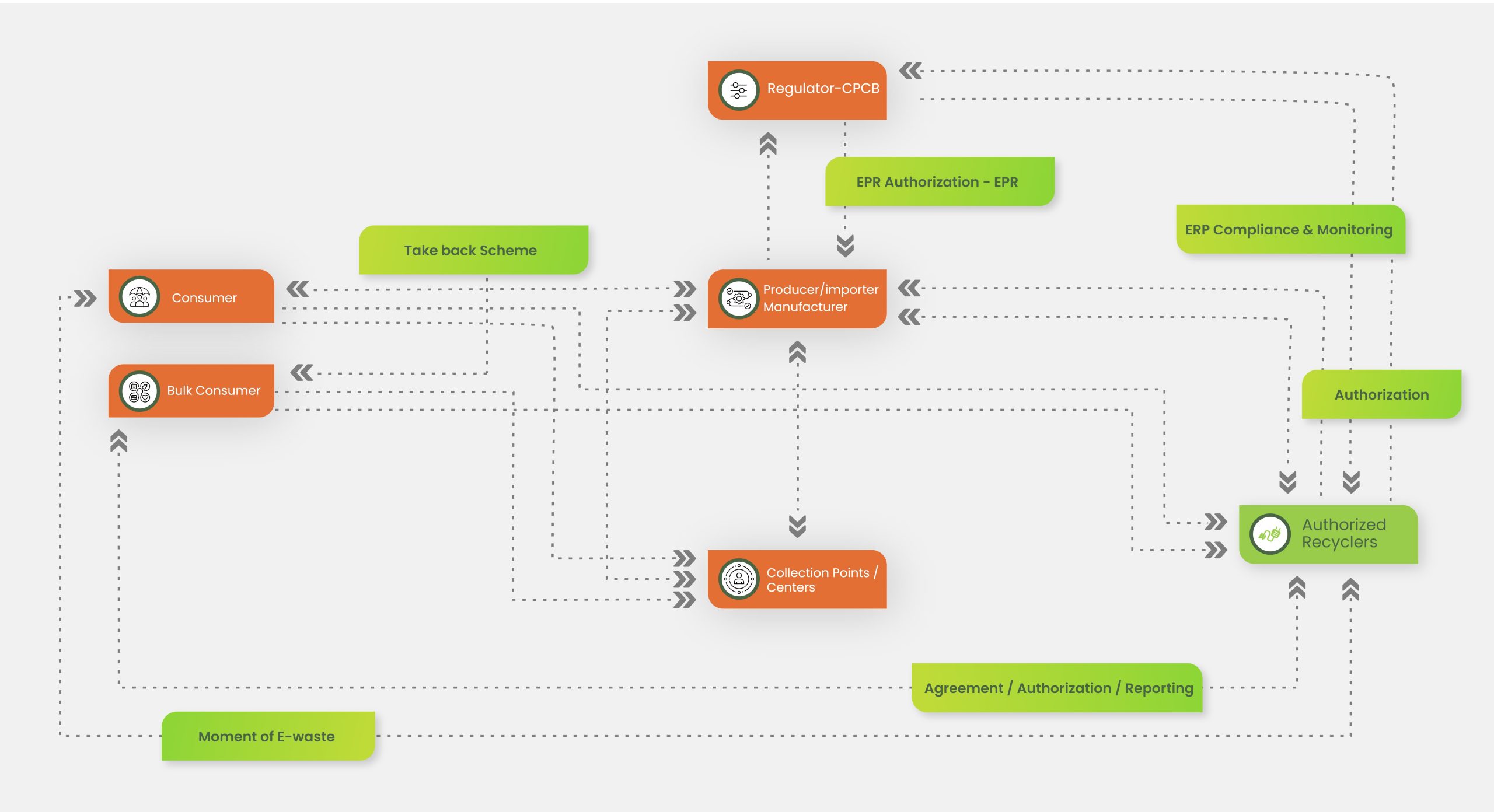
Benefits Of Partnering With Namo
Increased Sales
Reduced Cost
Compliance Risk
Mitigation
Meet Sustainability
Targets
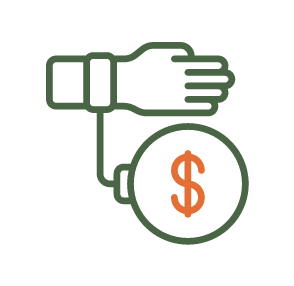
Meet EPR obligation
Consumer Awareness
and Reward Program
Increased Sales
Compliance Risk Mitigation
Reduced Cost
Meet Sustainability Targets

Compliance Risk Mitigation
Consumer Awareness and Reward Program
FAQs
Frequently
asked
questions.
Frequently asked questions.
eWaste (electronic waste) is a term for discarded electronic components which have reached the end of their useful life for better ewaste management services. This includes items such as computers, televisions, cordless phones, mobile phones, video game consoles and other electronic devices that are no longer being used.
Yes, you will get paid for recycling your gadgets with Namo eWaste. We offer a competitive rate for your gadgets, based on the model and condition of the device.Contact your electronic waste disposal recycler.
When it comes to electronic waste, there are a few things you need to keep in mind in order to properly dispose of it. First and foremost, electronic waste should never be disposed of in the trash can. Second, if you plan on disposing of your electronic waste at a recycling centre, make sure to call ahead and inquire about their procedures. Find e waste collection sites near you some recycling centres have special requirements for certain types of electronic waste. Finally, always err on the side of caution when disposing of any type of hazardous material, including electronic waste.
- It can be difficult to know when the right time is to recycle electronics learn with best ewaste management company.They may seem like they last forever, but eventually they will need to be replaced. Here are a few signs that it might be time to recycle your old electronics
- Your electronic device is no longer working properly.
- It is out of date and no longer supported by the manufacturer.
- You have upgraded to a newer model and no longer need the old one.
- It is damaged beyond repair.
The health hazards caused by eWaste include the emission of various chemicals, such as dioxins, polychlorinated biphenyls, and polybrominated diphenyl ethers. These chemicals are known to cause cancer and other diseases. The decomposition of eWastes can also release these chemicals into the environment.
Another health hazard caused by eWaste is radiation exposure from electronic waste burning or incineration. This is because some electronic components contain toxic metals such as lead or cadmium that can be released into the air during this process. Electronic waste contains heavy metals such as mercury and cadmium which are toxic to humans and animals when they come in contact with them. The harmful effects of e-waste can cause damage to the brain and nervous system if they are ingested or inhaled. They can also cause long-term health effects like liver toxicity and cancer if they accumulate in body tissues over time.
We look forward to collaborate with you and find the best solutions for your business. Get started today and put our excellent outsourcing expertise to use.

